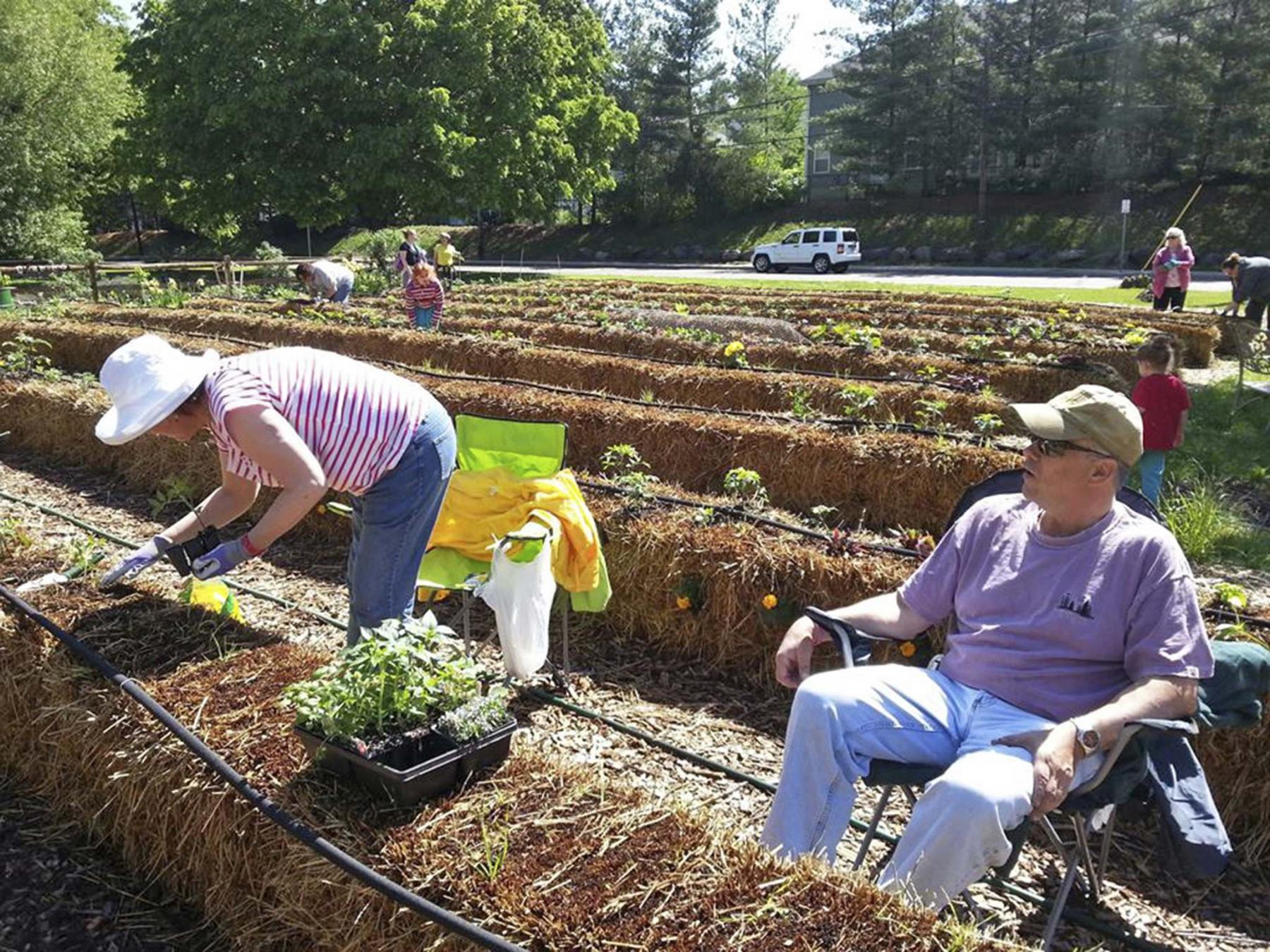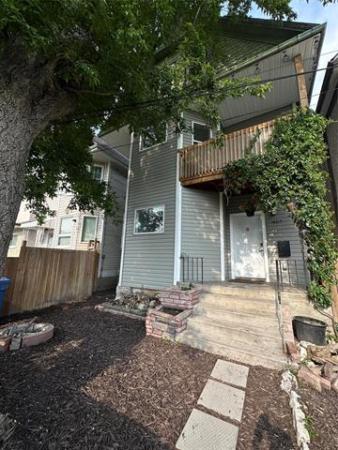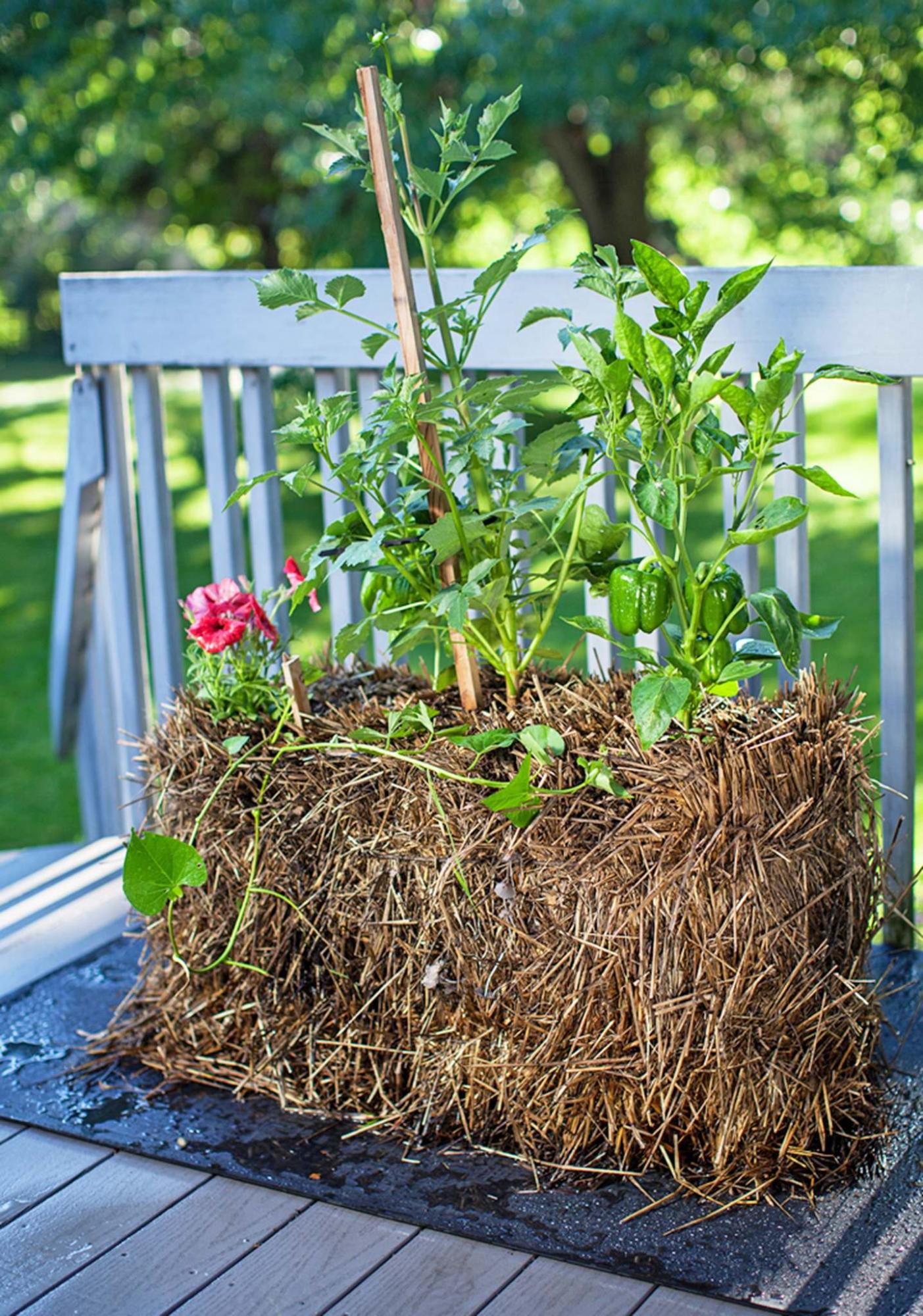
Set your straw bale garden on a rubber mat on a patio or deck and start growing.
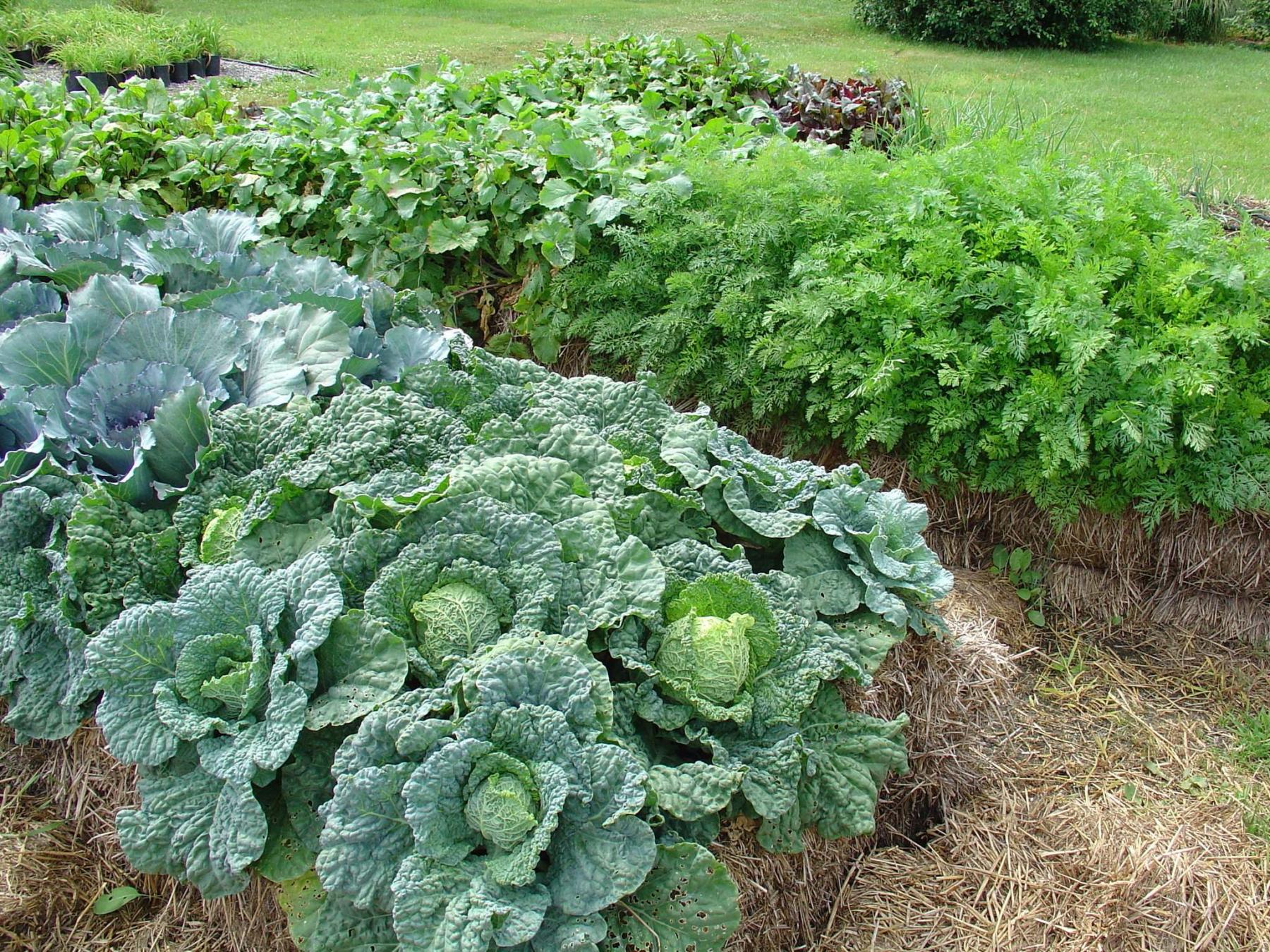
You can grow healthy, bountiful crops organically in straw bales.
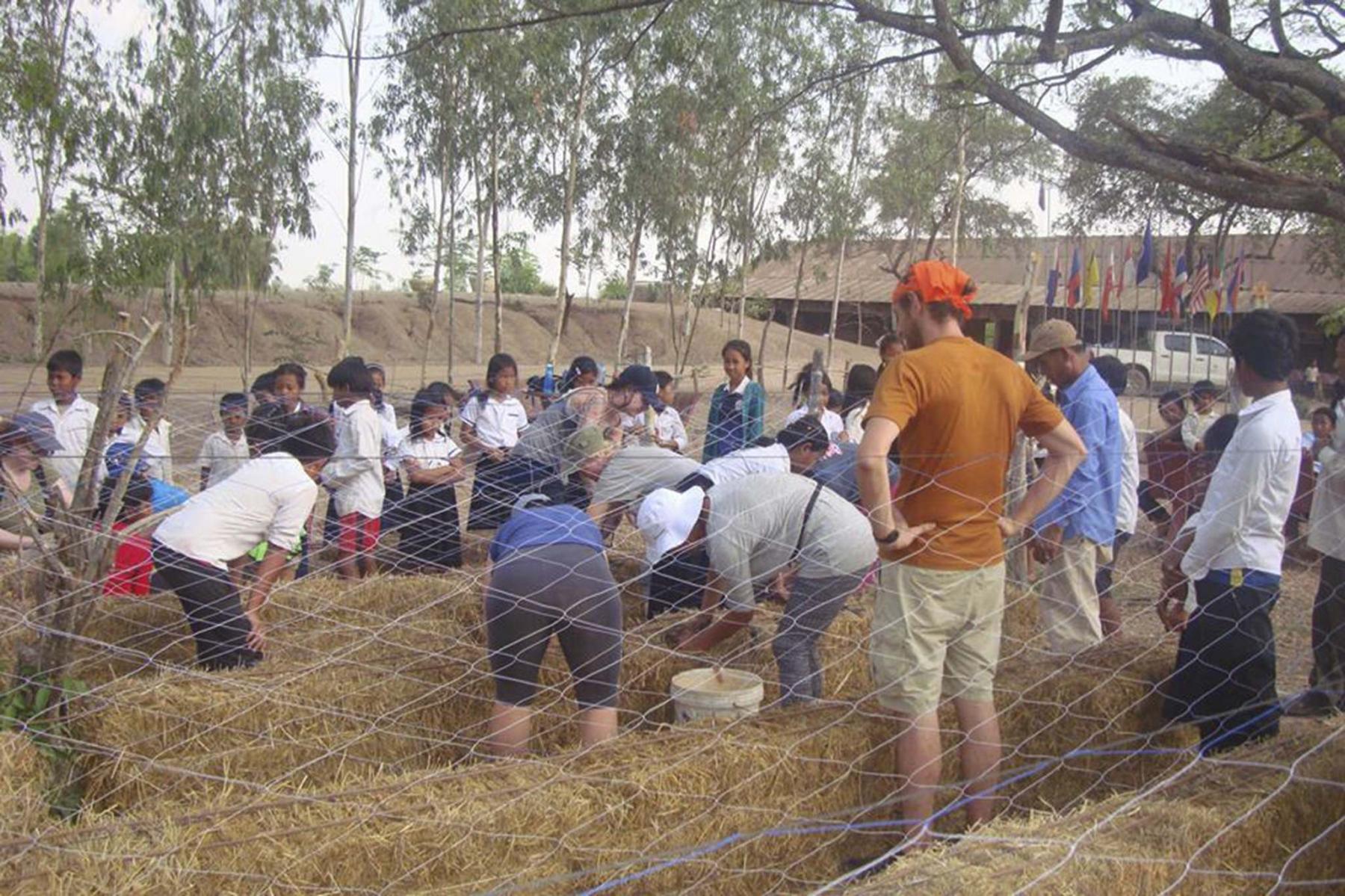
People in countries around the world are eager to learn the straw bale gardening method.
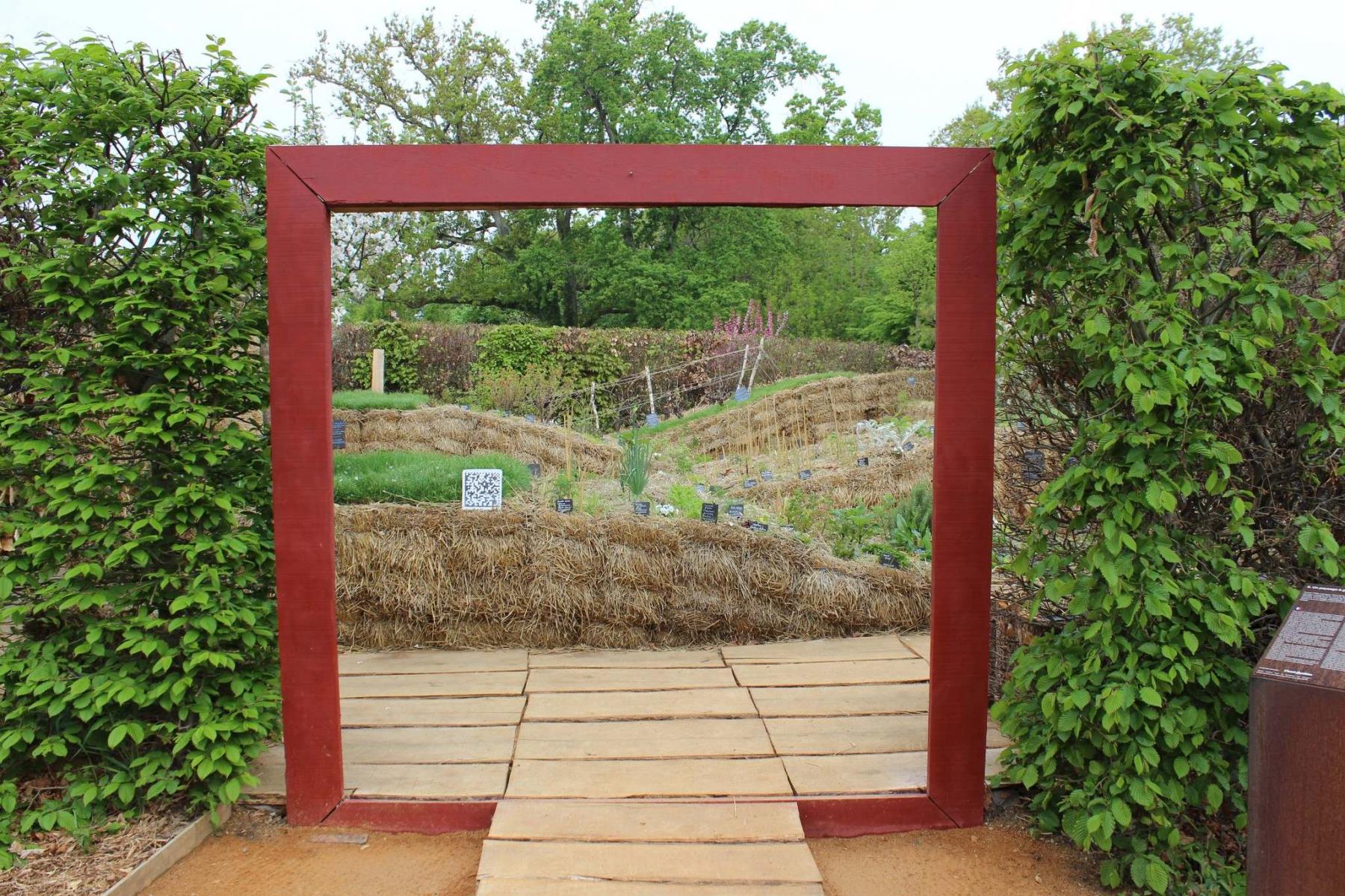
Straw bales and high design go well together in this example at the International Garden Festival in France.
According to Joel Karsten, author of several books about the straw bale gardening method, straw bale gardens can thrive on asphalt and concrete, which means you can plant on a driveway, rooftop, deck or balcony. That’s not even the best part. In the 29 years since he first experimented with growing food in straw bales, Karsten has discovered there are distinct advantages to this technique that have proved especially useful to different groups of people, including seniors.
Gardening can be strenuous. Planting, pulling out weeds, and harvesting from a stooped position can be tough on the back and knees. The raised height of straw bales makes planting easier, says Karsten. Bales are also easier to irrigate. An average straw bale garden typically requires four litres of water per bale per day. During the hottest days of summer, you might need to set your drip irrigation to water twice a day in order that thirsty crops such as tomatoes remain turgid.
One of the biggest advantages of straw bale gardening is the speed of the decomposition process early in spring. The conditioning process takes about 10 to 12 days and during that time, the temperature inside the bale very quickly heats up to an astonishing 57 to 60 C. Then it begins to cool down, but the day you plant into that bale the temperature inside is 32 to 37 C compared to much cooler soil temperatures in the ground that may be only 7 to 10 C in spring.
Karsten, who grew up on a dairy farm in Minnesota which, like Manitoba, has hot summers and cold winters (albeit not as extreme), says the accelerated heat inside straw bales results in fast and early season root production. While temperatures are too hot to plant for roughly 12 days, says Karsten, the residual warmth means gardeners can plant earlier in the season.
"The extra boost of heat makes the roots of your plants think it’s already July," says Karsten. In addition to faster root development, there is also earlier flowering and fruit set. This is especially valuable for heat-loving crops such as tomatoes, cucumbers and peppers. By planting earlier, gardeners can extend the spring growing season by 10 days to two weeks. "You don’t have to worry about nighttime frost because straw bales radiate heat that protects plants," says Karsten whose book demonstrates how you can make plastic tents to put over the top of bales in the event of a late, hard frost. In fall, when the days begin to shorten and sunlight decreases in intensity, the toasty warm environment inside bales provides a longer growing period for plants.
A horticulturist and author of four books on straw bale gardening, Karsten’s most recent book, Straw Bale Gardening Complete, (2019, Cool Springs Press) outlines step by step how to condition a straw bale and start planting. Let’s review the steps briefly.
First, source your straw bale in the fall from a reputable supplier and position your bale, cut side facing up, in the location where you want to plant — in your yard, community garden, or on a deck or balcony. In spring, sprinkle the top of your bale with 118 ml of fertilizer with a minimum of five per cent active nitrogen content. As an alternative, you can use blood meal. Then water the bale. On the second day, apply more water. On the third day, add another 118 ml of fertilizer to the bale. Water on the third day and the fourth day. Another 118 ml of fertilizer is added to the bale on the fifth day. Water and then on the sixth day, add just water. On days seven to nine, add 59 ml of fertilizer each day and water. The bale should start to heat up. On day 10, sprinkle 118 ml of balanced fertilizer on your bale and water. Nothing is required on day 11 and by day 12, your straw bale is ready to plant.
As you can see, no soil is added. It’s impossible to overwater because the water flows right through the bales. Your garden can be grown 100 per cent organically, says Karsten. To simplify things, Karsten has developed an organic product called BaleBuster which consists of blood meal, fungi and bacteria that work in tandem to speed the decomposition of the organic content of the bales.
Karsten believes so firmly in his straw bale gardening method and its ability to grow healthier crops with fewer limitations that he says it could help end world hunger. Straw bale gardening is a viable solution to food insecurity and malnutrition. Through demonstration gardens, Karsten has demonstrated in a powerful way that growing plentiful food is possible in the most challenging and unique circumstances, with few or no tools and at minimal expense. The world has come calling.
In his book, Straw Bale Solutions, Karsten tells the inspiring story of projects that have changed lives in Cambodia, Philippines, South Africa, Netherlands, and Argentina. In poor, urban areas in the Philippines, Karsten works with the University of Southeastern Philippines and the ACES Polytechnic College to create demonstration gardens. The straw that is used to make the bales comes from farmers’ rice paddies.
The bales are secured not by twine because that would be too expensive and difficult to source but by lengths of plastic unwound from soda bottles. The bales are prepped with urine which is high in nitrogen, says Karsten, as well as greywater (water that is left over from bathing and cooking). Often, the seeds used for planting have been harvested from crops grown the previous year.
"Everything in this process is free," says Karsten, "because in these situations the people don’t have funds — they don’t own land or tools."
Cambodia is another example. It has excellent soil for agriculture, however, farmers face significant challenges. Once they finish harvesting their rice, the rainiest months of the monsoon season drench farmland with up to 90 cm of water. When the floodwaters leave, drought sets in and temperatures soar as high as 48 C. Families survive on nothing but the rice they stored. Invited to demonstrate how straw bale gardening could facilitate growing crops during monsoon season, Karsten excavated a huge hole and used the soil to create a tall mound above the flood level. Straw bales placed on the mound were planted with leafy greens and vegetables.
The idea caught on and today there are more than 6,000 farmers in Cambodia who practise straw bale gardening.
Amazing food capabilities aside, do straw bales lack enough aesthetic appeal for your refined taste or garden design? Style-conscious gardeners can take their cue from a brilliant example of cutting-edge design at the 2013 International Garden Festival in Chaumont-Sur-Loire, France, where straw bales were conceived as elements in a continuous wave-like sculptural landscape.
Seriously, though, what could be more beautiful than a bountiful and sustainable food garden that feeds your family and is also an achievable way to give hope and nourishment to someone who struggles with issues of hunger.
colleenizacharias@gmail.com

